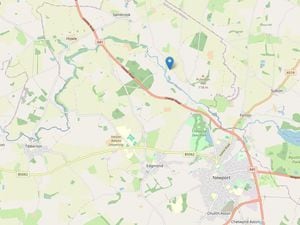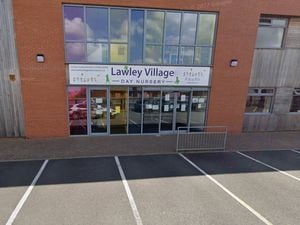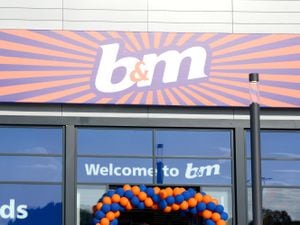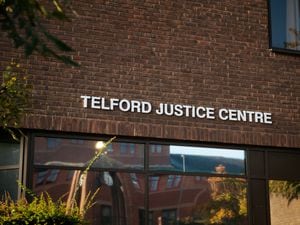Telford at 50: Measuring success story of the borough
There is an urban myth that suggests that when Telford was being planned, a dirty coffee cup was carelessly discarded on one of the blueprints.
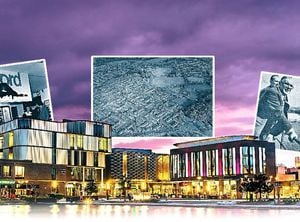
It left a stain, the story goes, that the architects took for a roundabout – and so it was that the town became dotted with apparently random junctions.
The tale, it should go without saying, is false. But occasionally it gets an airing when people want to be unkind about the new town.
And that’s a pretty common occurrence.
Telford hits its 50th anniversary today, but its celebrations are sure to be met with the odd curled lip by those who see it as a grey blot on the green Shropshire landscape.
The town was a place which could allow the West Midlands to grow, an old coalfield dotted with market towns into which those who couldn’t get a home in Birmingham and the Black Country could spill.
So how do we measure whether the intentions of the Telford Development Corporation have been successfully met by the bustling mass of 155,000 people celebrating its 50th birthday?
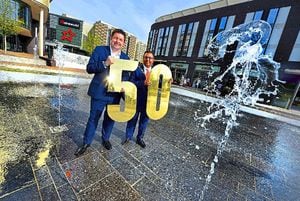
“Although I have a different view, one of the main aims was to provide a new community for people from the West Midlands to move into, and building all the houses for them to buy and rent,” said Telford & Wrekin Council leader Shaun Davies.
“But I think it was also about how that community and all those people came to integrate with those that were here anyway.
“I come from a family that was here long before Telford, and I know how important that was.
“The other aim was to bring economic stimulus and by every measure on that front, Telford has been a massive success. Still now we are punching above our weight in terms of inward investment. Landing the biggest foreign inward investment deal in a decade with the Magna plant was a huge success, and that was on the shoulders of the people that brought in Ricoh and Denso.
“Equally it has been to our testament that we have kept those companies here. They were brought here with many incentives, but 50 years on they are still here investing.”
Paul Walsh is a lecturer in Berlin who grew up in Telford, and who has been researching new towns.
“I went to the archives in Shrewsbury last summer,” he said. “It was interesting going through the archives, you can see the development of the new town project as it really happened as opposed to what the planners intended. That was a revelation to me.
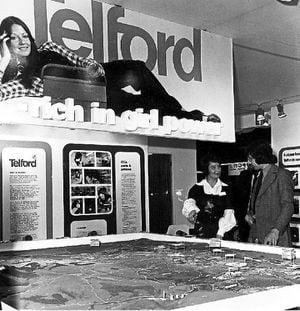
“For one thing, you can see the letters to the Dawley Observer and Shropshire Star, and a lot of them are quite angry. A lot of people weren’t happy about its planning.
“I grew up in Madeley, but we came after it was redeveloped. They really bulldozed it – there was an old bakers and dozens of homes bulldozed, and a lot of people were very unhappy about it, but I didn’t realise until after I had researched it.”
He added: “From my point of view, the town was a really good idea and if you speak to anybody that came in the early wave of people they see it as a really good thing.
“I’ve spoken to people that live in other new towns like Harlow and Milton Keynes, and they said the same thing as me – it was a great place to live and grow up as a lot of money was being put in whereas in a lot of other cities money was being pulled out.
“We were living in towns and cities that were growing, but after a while funding dries up, and the first wave of people gets older and you need a second and third wave.
“During the 1980s a lot more control was being brought back to London – England is really centralised now, there’s not as much regional activity and development as there used to be, and local councils don’t have much autonomy.”
Few people would regard Telford as perfect. Its shopping centre is popular but doesn’t provide the soul that some people crave from the heart of their town. Its housing is relatively cheap for the region, but its layout is built for motorists, and its public transport is at best erratic.
It’s full of green spaces, but the crime rate is higher than in other parts of Shropshire. While the town has built up a reputation for its industrial heritage and economic attractiveness, it’s also hit the headlines for the wrong reasons as the child sexual exploitation issue exploded.
Telford continues to grow faster than any other town in the Midlands, and new villages such as at Lawley are filling the gaps between parts of the borough.
“It was supposed to have been big, about 220,000 people,” said Marcus Keane, who runs the Telford Memories Facebook page.
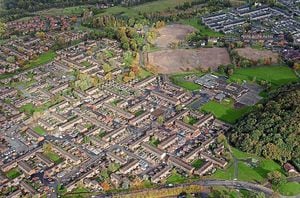
“But they didn’t quite reach that amount of people, and things changed as time went on. They started off with good intentions and it started to slow down and the vision started fading.”
He added: “You’ve got a lot of people that lived here before Telford was created who didn’t like the idea of Telford coming along. Then you have people that come over who have been here about 50 years, and there are different views between the two.
“You can see some of that resentment coming up on Telford Memories when people put old pictures up. You even get some people in the Wellington area that refuse to put Telford on letters. That feeling is still there.”
Despite people still expressing mixed feelings about the shopping centre, it seems to evoke a nostalgic streak in the people of Telford.
“If you put a picture of the old Carrefours on there, that’s something a lot of people remember and talk about and have fond memories of,” Mr Keane added.
“They were only there about six years but people remember it.”
“The town as a whole has been a partial success, depending on how you look at it,” Mr Walsh said.
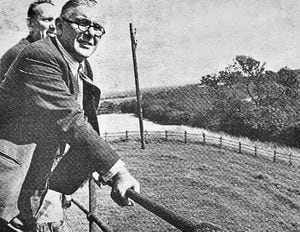
“Socially, a lot of people are very attached to the town, but architecturally it’s a bit of a disaster. Everybody needs to have a car, and that’s not going to work in the future. I lived on Brookside, and you are very socially isolated there without a car.”
“In the 70s the overspill people formed communities on estates like Woodside, Sutton Hill, Brookside, that were formed around the local pub or community centre,” Mr Keane added.
“But over the years it changed. People started to move away, and communities broke up.
“You now have a lot of private landlords on some estates, and that causes a problem because some of the houses aren’t looked after in the same way.”
So what comes next for Telford?
“To an extent places like Broseley and Shifnal and even Market Drayton are already looking at Telford for their own futures, which will be linked much more to Telford than to Shrewsbury.
“This isn’t a political statement as it’s happened under both governments, but the government have got to the point where they are banking the proceeds of new towns like housing numbers and economic benefits, but they have stopped investing in them and that’s true of all new towns.
“Telford Development Corporation has gone, and the local authority over the last 20 years has been a real positive force, but in terms of unlocking that next chapter, especially around public transport, you need a government to make a real commitment to Telford.
“There’s a real opportunity on our 50th birthday for decision makers to take stock of the next 50 years and see the benefits that Telford can have on the whole region.”
A milestone moment for Shropshire
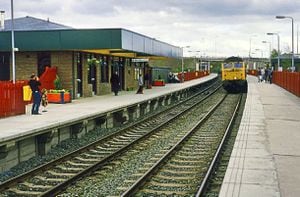
The last half-century is peppered with important milestones for the development of the new town at Telford.
In 1973, the first phase of Telford town centre was opened. In 1986 Telford Central station received its first trains. In 1989 the Princess Royal Hospital opened its doors.
Last Sunday, November 25, marked the 35th anniversary of then-Transport Secretary Nicholas Ridley cutting the ribbon on the M54, connecting Shropshire to the country’s main motorway network for the first time.
But the celebrations of the last few month, the Telford 50 logos, the balloons floating into the sky and the carnivals on the ground, have all been in recognition of what happened on November 29, 1968.
Relieve
It was on that day that Telford officially came into being. On that day the official order was made in parliament allowing Dawley New Town to extend its boundaries and take in all of what we now know as Telford.
Originally, the new town had seen Dawley expanding. In 1962 the Minister for Housing Charles Hill had announced plans for a new town to help relieve the congestion felt by Birmingham. Dawley was not so close as to add to the problem, but was not so far away as to feel remote from the Second City.
Some local communities were consumed by the expansion, others were wiped out, their inhabitants relocated.
Then, in 1968, the Housing Minister Richard Crossman bestowed upon the new community its new name. That name was confirmed by that same order of the following year that extended its boundaries by more than 10,000 acres.
This week, that landmark announcement in the House of Commons reaches a significant anniversary.
Homes, businesses – but where’s the culture?
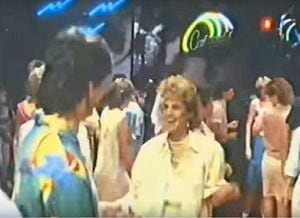
Simply building Telford wasn’t enough to create an entire community from scratch – people had to be convinced that a move to the new town was right for them.
So advertisements were created that encouraged people to up sticks and relocate to the east Shropshire coal fields.
In one, from 1984, a businessman is seen pootling about in his Rover looking at the various “stunningly modern office blocks” at Telford plaza and industrial estates at Halesfield and the Maxell factory.
If you can overlook the synthesizer music that gives the ad the same atmosphere as Blake’s Seven, it shows the various aspects of life in the new town, including attractive housing, the heritage of Ironbridge, and the glowing good health of the man’s young family.
What it doesn’t show is a thriving nightlife. Another ad, also from the 80s, attempts to remedy this by showing the smiling crowds in Cascades nightclub. But it was never quite enough to really make the town into somewhere people went after the shops shut.
“I think something that brought people into the area for live acts would be good for bringing people to the area,” said Marcus Keane.
“There are a lot of places to eat in the town centre now so there is some nightlife there, but nothing that really goes on after midnight.
“In Birmingham you can come out of one place and go into another and have something to eat to end the night at 2.30am. Telford closes down, especially around the town centre.”
The lack of a nightlife is regularly levelled at Telford, despite the multi-million pound redevelopment of Southwater, tucked between the shopping centre and Telford Town Park.
“Having studied a few of the new towns, the best seem to mix opportunities for work and leisure, and also transport,” said Paul Walsh. “They integrate it into the whole and mix that with a social programme as well.
“My bugbear with Telford has always been that it has never had a proper theatre or cultural centre.”

